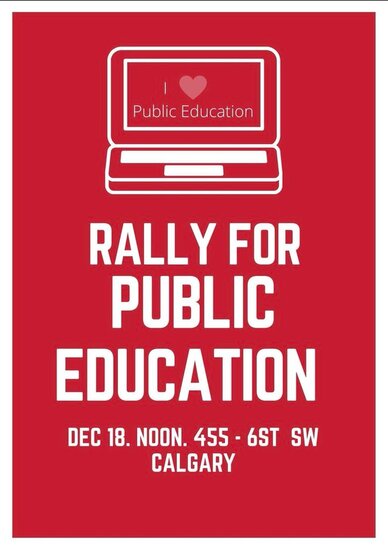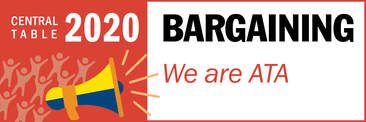|
Travelling During a Pandemic (Information as of 2021-11-01)
With borders reopening and the holiday season fast approaching, information to assist teachers with decision making related to travel is important. An employer cannot direct what teachers do on their personal time. A decision to travel may have consequences, but that decision remains with the teacher. As always, the Association advises teachers to call for assistance with personal situations, as every situation may be slightly different. Certain Alberta Health Services (AHS) guidelines and restrictions remain in effect and can be found at www.albertahealthservices.ca. As well, travel advisories greatly affect travel plans, and it is the traveller’s responsibility to check on these. While travel has opened up, there are restrictions and requirements surrounding travel that are in place and continue to change. Be sure to be aware of all travel advisories and requirements, which can be found at https://travel.gc.ca. Here are some questions you should consider:
Some of these requirements may affect your ability to return to work after the holiday and may create potential issues with your employer. If you are sick, for whatever reason, you are entitled to sick leave provisions in your collective agreement. If you are required to quarantine because you are exhibiting symptoms and are sick, you are entitled to sick leave as per your collective agreement. (Some teachers have 90 days and some have statutory sick leave of 20 days per year.) Sick leave entitlement is not affected by travel in any way. Employers are not entitled to an employee’s medical diagnosis. Problems with a return to work as the result of other issues (such as a delayed flight) are managed with collective agreement days off, such as personal days or days off without pay. If you are not sick but are required to quarantine, you must take that time through applicable leaves that are accessible in your collective agreement, (some may be without pay). Travel is a personal choice and is unpredictable at this time. Once again, we do advise that teachers call in about their individual situations to receive advice. As for benefits and travel, some aspects of your medical coverage may not be in effect if you travel internationally when advised not to do so. (At this point, international travel has re-opened, but we advise you to continue to monitor that status.) We advise you to contact your benefits provider, before travelling, to familiarize yourself with the specific details of your plan and to ensure that, in the current conditions, you are covered for all aspects of the trip (from quarantine costs, such as hotel rooms, to costs related to having to change flights). Further information or assistance is available by calling Teacher Employment Services (SARO) at (403) 265-2672 (or Barnett House) at 1-800-232-7208. WORTH SHARING With the holidays approaching, teachers may be considering travel. Teachers should check current travel advisories and consider all potential consequences of travelling during a pandemic. #WEAREATA Please join Local 55 Executive and ATA President Jason Schilling, and fellow supporters of public education, by attending this Saturday's rally! Where: McDougall Centre, 455 - 6 St SW, Calgary When: Saturday, December 18, 12:00pm RSVP here. Our work is not yet done and we must keep the momentum up!
Thank you, The Alberta Teachers' Association WORTH KNOWING
Teachers and Violence in the Workplace Part 27 of the Occupational Health and Safety Code identifies violence as a workplace hazard, and it is defined as “the threatened, attempted or actual conduct of a person that causes or is likely to cause physical injury.” Examples of workplace violence follow · threatening behaviour such as shaking fists, destroying property or throwing objects; · verbal or written threats (any expression of intent to cause harm); and · physical attacks such as hitting, shoving, pushing or kicking. Teachers may face violence while at work in various ways. Unfortunately, it is becoming common for teachers to experience violence when dealing with students who have behavioural difficulties. Teachers may also face violence from parents, colleagues and members of the public, and by being in close proximity to an altercation between other people. The first step is to ensure that violence is recognized as a hazard on the hazard assessment. It is important to note that the potential behaviour is the hazard, not a specific person. A hazard assessment applies to the entire work site, not just a classroom or a situation where a student with violent behaviour has been identified. It is also possible that in a work site where no student with violent behaviour has been identified, that work site may experience a violent event, and that possibility must be noted on a hazard assessment. When a hazard is observed, the teacher must evaluate their own risk regarding the potential frequency exposure to the hazard as well as the potential severity of any injury as a result of the hazard. This level of risk may be different for each individual teacher depending on their circumstance and assignment. Like many workplace hazards, elimination is ideal but may not be possible. Therefore, controls must be identified and implemented to mitigate the risk associated with the hazard to the highest degree possible. Hazard assessments and the identification of controls require participation by all work site parties affected by the hazard. The first choice of these controls is to engineer the workplace to isolate people from the hazard. For example, school doors are often locked, and visitors must check in at the office. In a classroom, the configuration of furniture and placement of the teacher’s desk and workspace should reduce a student’s ability to aggressively approach the teacher. If the hazard cannot be controlled by engineering alone, adding administrative controls is the next choice. This involves changing how people work and implementing procedures. When working with a student with behavioural challenges, many of the administrative controls should be found in the student’s behaviour support plan. This may include a process for intervention from administration or the student’s parents. Finally, if the hazard is still not controlled, personal protective equipment is added to the suite of controls in place. This includes any equipment that would act as a barrier between the teacher and the student so that if the student becomes aggressive, injury to the teacher would be unlikely. Often, hazards are controlled by a combination of engineering controls, administrative controls and personal protective equipment. If a teacher believes that the hazards are not being adequately controlled, they should contact Teacher Employment Services (TES) for advice (1‑800‑232‑7208). Everyone at the school must follow the protocols put in place to control identified hazards. As well, any concerns about unsafe conditions or controls that are not working or not being followed must be promptly communicated to the principal. This can result in a review of the hazard assessment and a modification of the controls in place, helping to ensure the health and safety of everyone at the school. WORTH SHARING Teachers can provide health and safety feedback to the principal at any time. Promptly report an unhealthy or unsafe condition, including violence, at the school. If you have suggestions for improving safety, let the principal know that you would like to discuss these matters at a health and safety committee meeting. #WEAREATA Your Central Table Bargaining Committee (CTBC) met with the Teachers’ Employer Bargaining Association (TEBA) for another productive meeting on November 30.
Read the latest post from Murray Lalonde, CTBC Member and District Representative for Central East, on the Bargainer's Blog for an update. The Alberta Teachers' Association |
Details
Updates from ATA ProvincialArchives
June 2024
Categories |








 RSS Feed
RSS Feed